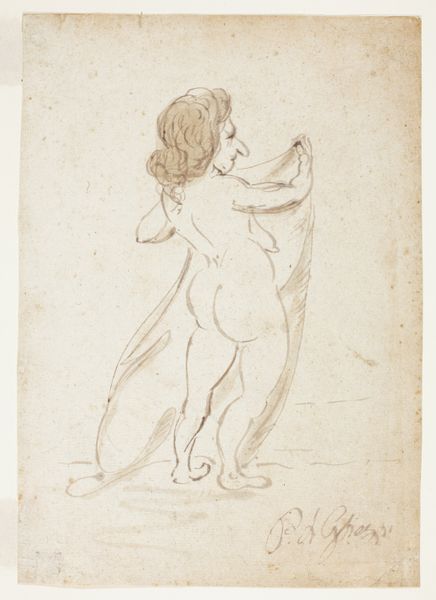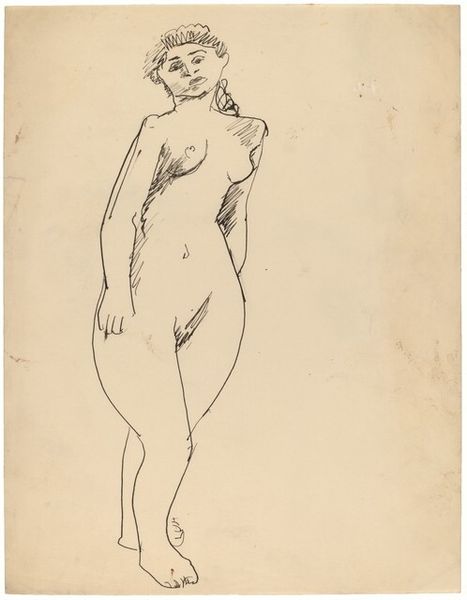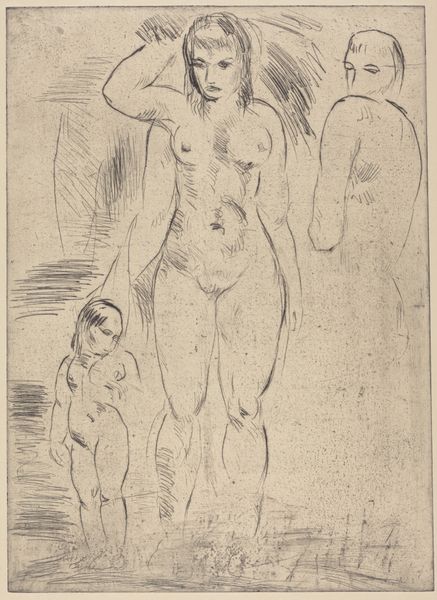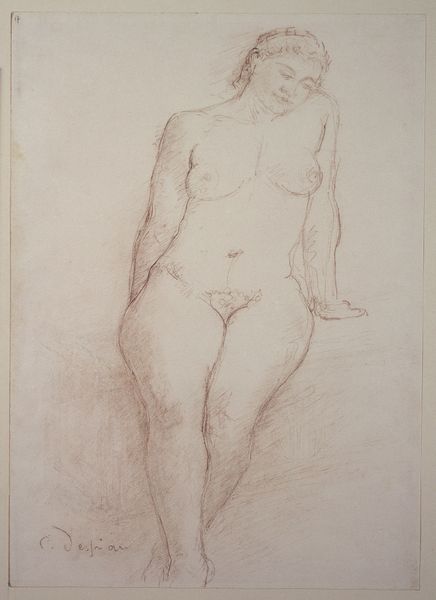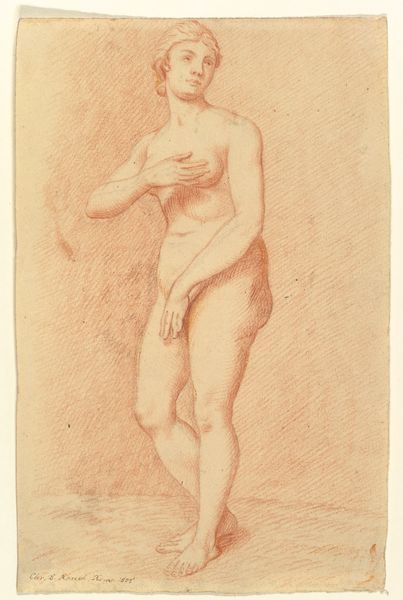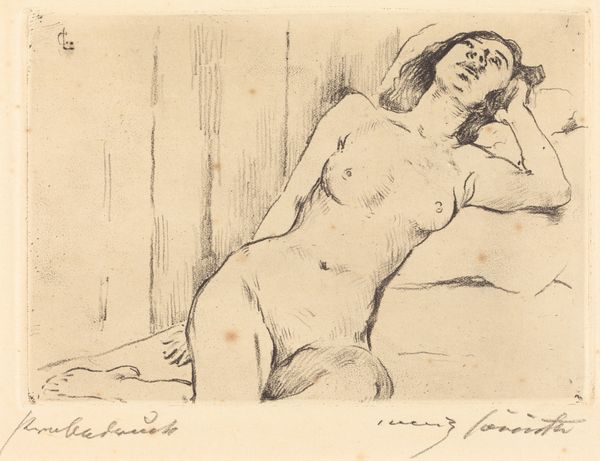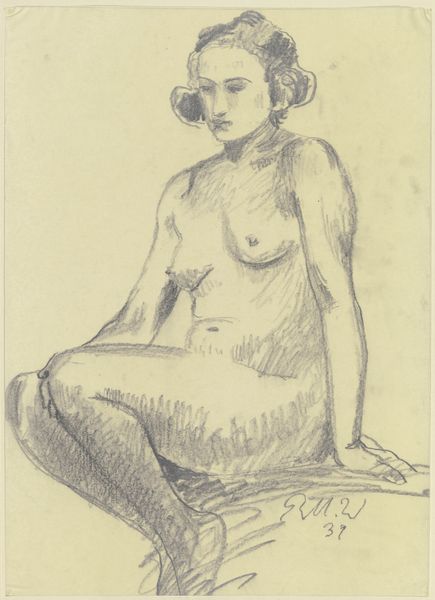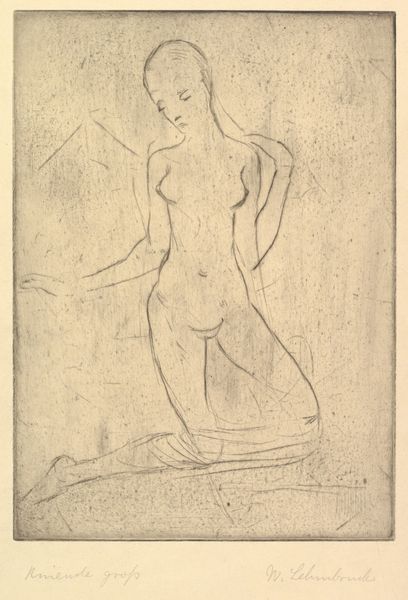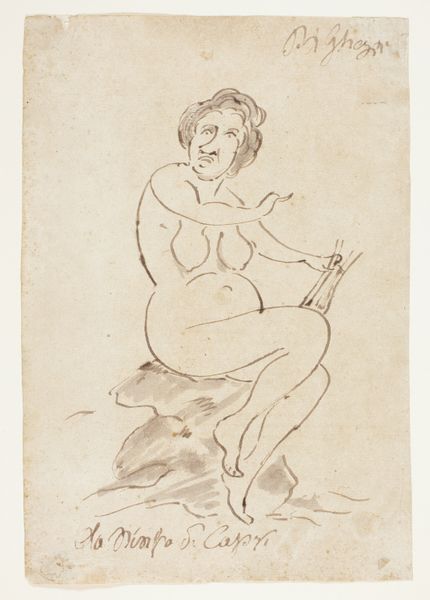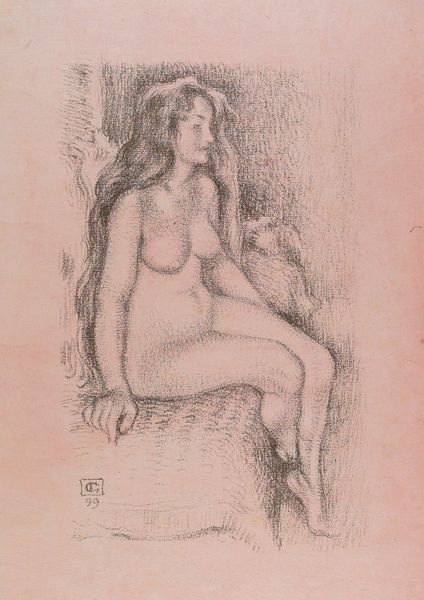
Copyright: National Gallery of Art: CC0 1.0
Editor: This is Jean-Louis Forain's "Nude Woman, Seated on Her Bed, Front View," an etching from 1909. There's a vulnerable, almost melancholic air about her, don't you think? How do you read this piece? Curator: The woman's posture, combined with Forain’s quick, almost dismissive lines, certainly evokes a sense of vulnerability. However, I'd ask: vulnerable to what? Forain worked in a Paris steeped in social inequality and patriarchal structures. How might this etching be read as a commentary on the commodification of the female body and the power dynamics inherent in the male gaze? Editor: That’s a completely different way to think about it! I was focused on the individual, not the broader societal context. Are you saying Forain is making a statement? Curator: Possibly. The Impressionists, while celebrated for their aesthetic innovations, often reflected or inadvertently reinforced the social norms of their time. Considering this, and reflecting on how women were perceived and portrayed, does this change your initial feeling about the work? Does it perhaps amplify the undercurrent of exploitation alongside the vulnerability? Editor: It does. I see how easy it is to view art in a vacuum, divorced from the realities of the time. I didn’t initially consider that this might be less about a singular woman’s melancholy and more about her place in a system. Curator: Precisely. By questioning the apparent subject and considering the sociopolitical context, we move beyond a passive observation towards a critical engagement with the artwork and its historical implications. Editor: Thank you, I have so much to consider about the act of looking, and interpreting art. Curator: Indeed, these pieces ask questions not just about who we are, but also what we tolerate, and ultimately, what we want to change.
Comments
No comments
Be the first to comment and join the conversation on the ultimate creative platform.


